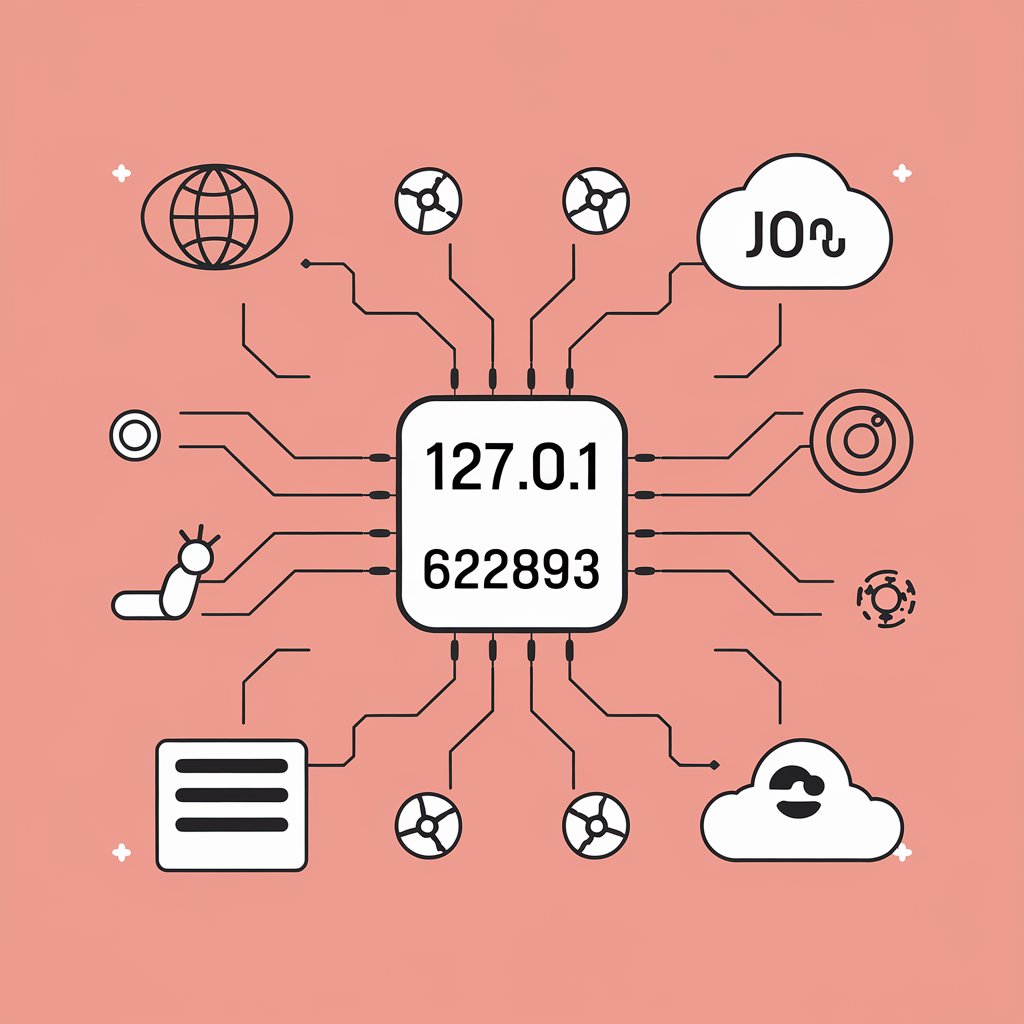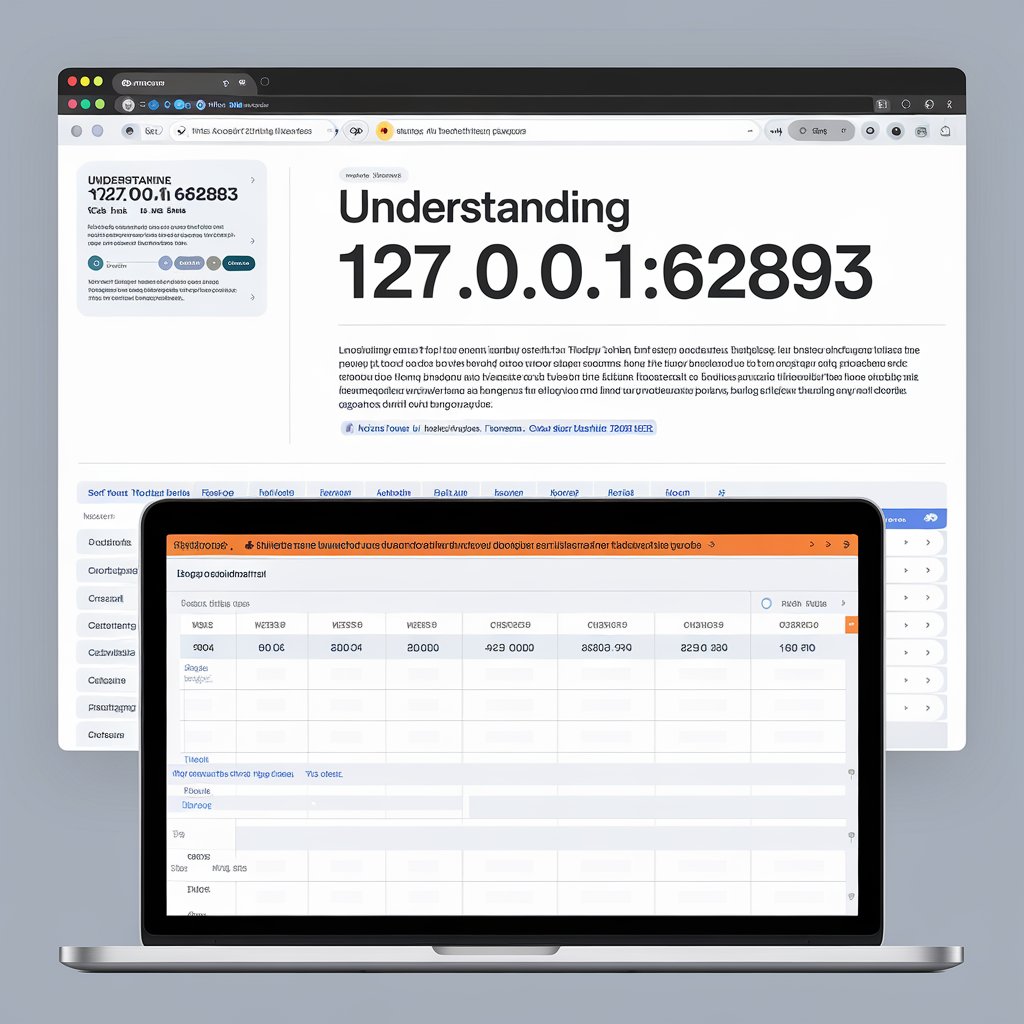Introduction
The technical world is vast and often complex, filled with tools, terms, and configurations that form the backbone of modern computing. One such term is 127.0.0.1:62893, a specific combination of an IP address and port number. While it may seem cryptic to some, this address serves a significant purpose in network communication and software development. This article dives deep into what 127.0.0.1:62893 represents, how it works, and its importance in today’s digital environment.
Table of Contents
What is 127.0.0.1?
The IP address 127.0.0.1 is universally recognized as the “localhost.” It acts as a loopback address, allowing a computer to communicate with itself. This address is a fundamental part of the Internet Protocol (IP) standards and is reserved specifically for testing and internal networking purposes.
In simpler terms, when a developer uses 127.0.0.1, they are instructing the system to refer back to its host machine rather than attempting to communicate with external devices.

The Role of Port 62893
In network communication, a port acts as an endpoint for sending and receiving data. While 127.0.0.1 is the address, 62893 specifies the port. Together, they define a unique destination for traffic on the localhost.
Port numbers range from 0 to 65535, and each serves a particular function. Ports like 80 and 443 are widely known for web traffic, while others, such as 62893, are typically used for specialized or temporary purposes.
Why 127.0.0.1:62893 is Important
This specific combination is often employed by developers and system administrators for tasks like testing, debugging, and managing local servers. Here’s why it matters:
- Local Server Testing
Developers use 127.0.0.1:62893 to test applications locally before deploying them to production environments. By doing so, they can identify and resolve issues without affecting live systems. - Secure Communication
The loopback address ensures that data transmitted to 127.0.0.1:62893 never leaves the local machine. This makes it inherently secure, as no external entity can access the communication. - Debugging and Development
During the software development process, tools often use ports like 62893 for debugging purposes. This allows developers to simulate real-world scenarios without requiring external network resources.

How 127.0.0.1:62893 Works
To understand its functionality, let’s break down the process:
- Application Initiates Communication
An application on the host machine sends a request to 127.0.0.1:62893. This could be a web server, database, or any other software requiring a network connection. - System Handles Loopback
The operating system recognizes 127.0.0.1 as the localhost and directs the request internally, ensuring the data does not travel outside the machine. - Port Processes the Request
Port 62893 processes the incoming or outgoing data, routing it to the appropriate application or service running on the localhost. - Response is Returned
The system sends a response back to the originating application via the same address and port, completing the loop.
Common Use Cases for 127.0.0.1:62893
The address and port combination is versatile, finding applications in various scenarios:
- Web Development: Localhost setups like XAMPP or WAMP often use specific ports to run servers for website development.
- Database Management: Tools like MySQL and PostgreSQL may use unique port assignments for local access.
- API Testing: Developers frequently test APIs on localhost to ensure they function correctly before public deployment.
- Custom Applications: Some proprietary software uses dynamic ports like 62893 for temporary communication needs.
Troubleshooting 127.0.0.1:62893 Issues
Despite its reliability, users may occasionally encounter issues with 127.0.0.1:62893. Here’s how to address common problems:
- Port Conflicts
- Cause: Another application might already be using port 62893.
- Solution: Identify and terminate the conflicting process using tools like
netstatorlsof.
- Firewall Restrictions
- Cause: Security software might block the port.
- Solution: Configure your firewall to allow traffic on 62893.
- Misconfigured Application
- Cause: Applications might fail to bind correctly to 127.0.0.1:62893.
- Solution: Verify application settings and ensure no syntax errors in configuration files.

Security Considerations
While 127.0.0.1:62893 is inherently secure due to its local-only nature, there are still precautions to keep in mind:
- Avoid Unnecessary Exposures: Ensure no software is unintentionally binding to other network interfaces.
- Regular Updates: Keep all software using this configuration updated to mitigate vulnerabilities.
- Monitor Ports: Regularly check which ports are in use to prevent unauthorized activity.
Advantages of Using 127.0.0.1:62893
- Reliability: As a local-only address, it eliminates risks associated with external network issues.
- Efficiency: Loopback communications are fast and efficient, perfect for high-speed testing.
- Cost-Effective: No need for external hosting or network resources when working locally.
Also read: Coyyn.com Digital Business: Innovate and Succeed
Conclusion
The combination 127.0.0.1:62893 might appear technical at first glance, but it is a vital tool for developers and IT professionals. By understanding how it works, its significance, and its use cases, users can harness its full potential. Whether you are debugging software, testing a web application, or managing a local server, this localhost configuration ensures a secure, reliable, and efficient way to achieve your goals.













